Media | Articles
Review: 2021 Toyota Highlander Hybrid Platinum AWD
The crossovers have won. To fight the onslaught is at this point a hopeless endeavor. Nevermind the fact that the perfect family vehicle, the minivan, already existed. Of course, the minivan’s downfall is that it looks like the perfect family vehicle. All function and no form, it is as reliable and unsexy as Dad falling asleep on the couch, mouth open, before the third quarter of Monday Night Football.
The undisputed champion kid-hauler in America today is the three-row SUV, a smoothed-over pastiche of truck-based predecessors with a sweeter, marshmallowy center. This segment’s purposeful styling and raised ground clearance, under the mildest scrutiny, raises questions about the purpose of such a vehicle: to make daily existence appear a bit more adventurous than it actually is.
Most ordinary people, perhaps understandably, want ordinary cars. And so we arrive, with apologies to Christopher Lambert, at the best-selling three-row SUV in America: the Toyota Highlander. Revised for 2020, the Highlander now rides on the same TNGA-K platform as the Camry. The base engine remains a naturally aspirated V-6, with a four-cylinder hybrid offered at a $1500 premium. Also on this platform we find the recently updated Sienna minivan, which now comes exclusively with the very same hybrid powertrain and optional all-wheel drive, independent MacPherson strut front suspension, and multilink rear. The lesson here, aside from the undeniable business advantages of efficient platform sharing, is that a high seating position and chunky proportions do not an off-roader make.
Only one other automaker—Ford—has embraced the electric motor for its three-row family SUV. But where the V-6 hybrid Explorer with all-wheel drive starts at $53,995, packs 318 hp, and returns 24/25 mpg city/highway, the Highlander Hybrid takes a much different tack. With all-wheel drive it be had for as little as $41,550 for the LE, or $51,885 for the top-of-the-line Platinum we tested. Fuel economy is a stunning 35/34 mpg city/highway, albeit from a 245-hp system that combines two electric motors up front with a 2.5-liter four-banger and a rear electric motor for AWD models. To call the Highlander Hybrid a big Prius would be reductive, yet not unfair.
The Highlander has never been an especially striking vehicle, and Toyota hasn’t added much spice for the fourth generation. The only visual nod to its electrically assisted drivetrain is a subtle blue shading to the exterior badging. This is both intentional and intelligent, because even Toyota now understands that regular people want to drive to the grocery store and through the school pickup lines without serving as rolling billboards for the moral superiority of low emissions.
Marketplace
Buy and sell classics with confidence
The Sienna’s longer wheelbase and sliding doors render it more practical, but the Highlander nevertheless makes a strong case for everyday usability. Entry and exit are somehow easy for both kids and elderly adults. Door openings for both front and middle rows are massive—wide enough to accommodate a child’s car seat handled with thoughtless confidence. There’s leg room for days. Seats fold in a cinch. USB chargers abound. Adults won’t want to spend more than half an hour in the third row, but it’s not miserable back there by any means. Flying coach in the middle seat is marginally worse.
If only the hybrid powertrain had a jet engine’s blanket of white noise. Sudden demands on the throttle abruptly alter the sound in the cabin from electric serenity to groaning tomcat. Like most mild hybrid systems, the Highlander’s Hybrid Synergy Drive is much happier maintaining momentum than changing it; keeping the gas engine unstressed and invisible requires measured, gradual inputs. Pure electric driving is technically possible, but requires such delicate throttle inputs and sub-15-mph speeds that it’s practical only for crawling in city traffic. All that said, the Highlander does move off the line with eagerness and can execute highway passes without issue. There’s little doubt Toyota’s V-6 could do the job more smoothly and quietly, which would be more befitting of a Platinum-trim vehicle that’s operating in Lexus transaction price territory. And if you plan on doing any trailer pulling, the tow package is only available on the V-6, raising the max rating from 3500 pounds to 5000 pounds.
Lexus drivers won’t turn their noses up at the Highlander’s ride quality, which is relaxed and unfussy. The cabin, too, isolates road and wind noise from occupants in all three rows. It won’t win any enthusiast awards for steering feel, but the Highlander does a good job of hiding its heft in low-speed parking maneuvers. On the highway it lumbers along pleasantly. It’s not too tippy upon changing lanes, though the chassis hardly feels sucked to the pavement. We drove hundreds of miles on New Jersey interstates, the Toyota eating up miles without the slightest complaint as it kept up with reckless Northeast drivers and effortlessly inked 35 mpg.
As mentioned, our test car was a top-tier Platinum mode. Fifty large is a lot of money, but what you get is a near-unobjectionable family hauler with materials and amenities that knock on the door of luxury. The leather seats are especially soft and supportive, but some of the fake-metal material on the dash trim looks a lot better it feels. Here, Lexus still walks the walk.
The Platinum’s biggest appeal is its standard 12.3-inch touchscreen and 360-degree camera, the latter of which is genuinely useful for parking. The big panoramic moonroof is pretty, but the part that actually slides and opens is almost comically small. Toyota’s interface is perfectly acceptable, with a responsive touchscreen and big enough icons that you rarely fat-finger the wrong selection. CarPlay, too, works seamlessly. The only downside is the permanent split screen, courtesy of a submenu that appears as a side runner either on the left or right, robbing you of a full-width experience. In any case, it’s a lot more enjoyable to look at than the instrument cluster—an incomprehensible shotgun blast of graphics, colors, and senseless gauges with distracting, oscillating needles. On the brighter side, JBL’s 11-speaker stereo is crisp but not especially bassy, with center-stage situated right around the windshield.
If you don’t absolutely need the top-trim Highlander, stick with the Limited, which is the next rung down. It gets you most every luxury feature that you’d realistically want, and even the mid-grade XLE is well-equipped. The Platinum, however, may prove a cushy landing pad for Lexus buyers uninterested in the RX-L’s cramped dimensions and put off by the GX’s truckish dynamics. But our bet is these luxury types will much prefer the sophistication of the V-6, whereas XLE buyers may find the Hybrid’s fuel sipping more attractive.
The sheer number of Highlanders available, especially from conservative Toyota, is strong evidence that they’re in demand. Simply put, these vehicles deliver what most families want and need. The crossovers won. But as mainstream car overlords go, the Highlander is a fairly benevolent one.
2021 Toyota Highlander Hybrid Platinum AWD
Base Price/As-Tested: $51,490/$51,808
Highs: Cushy ride, Lexus-like comfort, exceptional fuel economy.
Lows: Coarse-sounding gas engine not befitting of a top-trim model, unattractive gauge cluster, unremarkable exterior styling.
Summary: For those who can’t admit the Sienna’s obvious advantages, the Highlander Hybrid is a more than capable family-hauler for middle-class America.











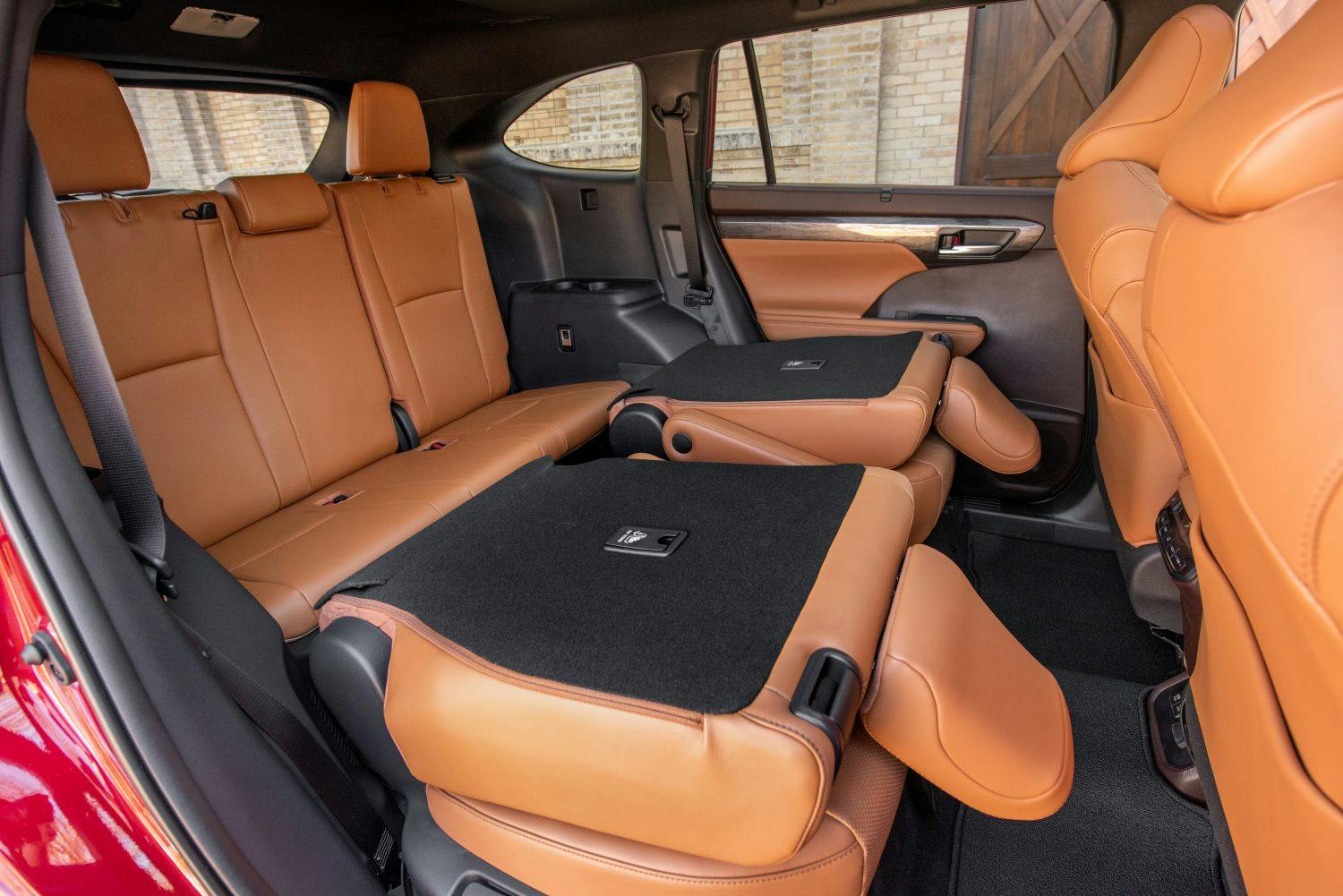
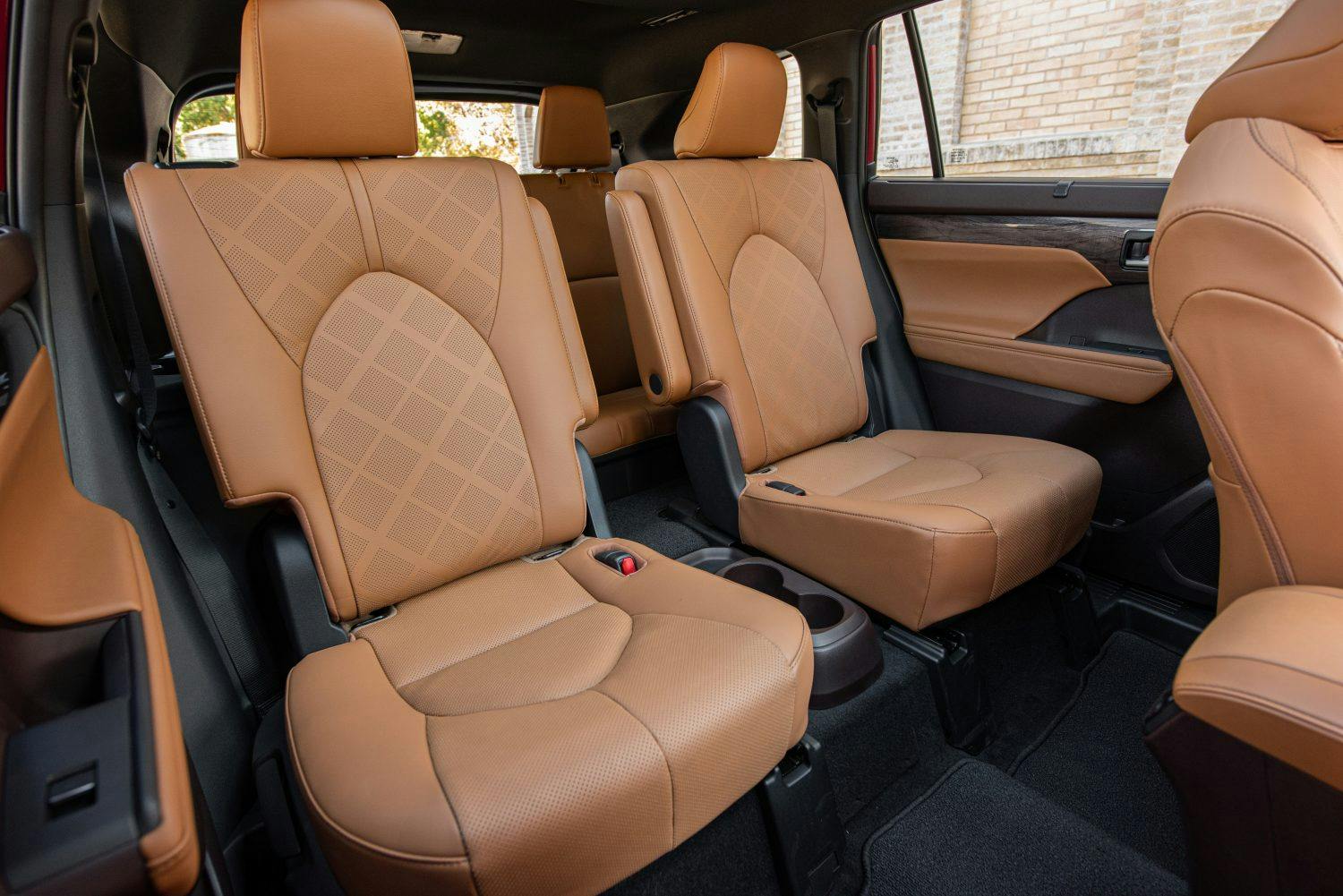
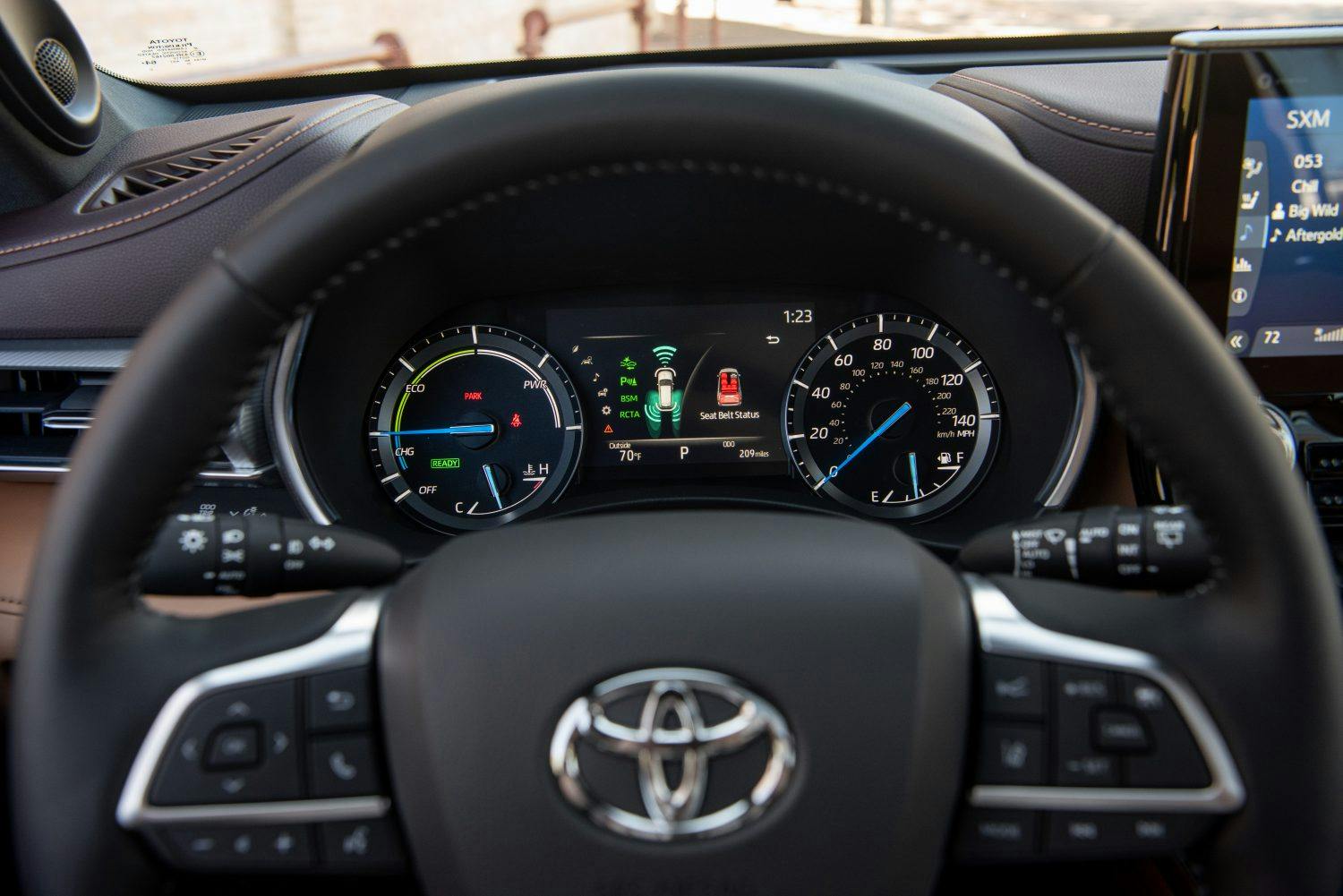
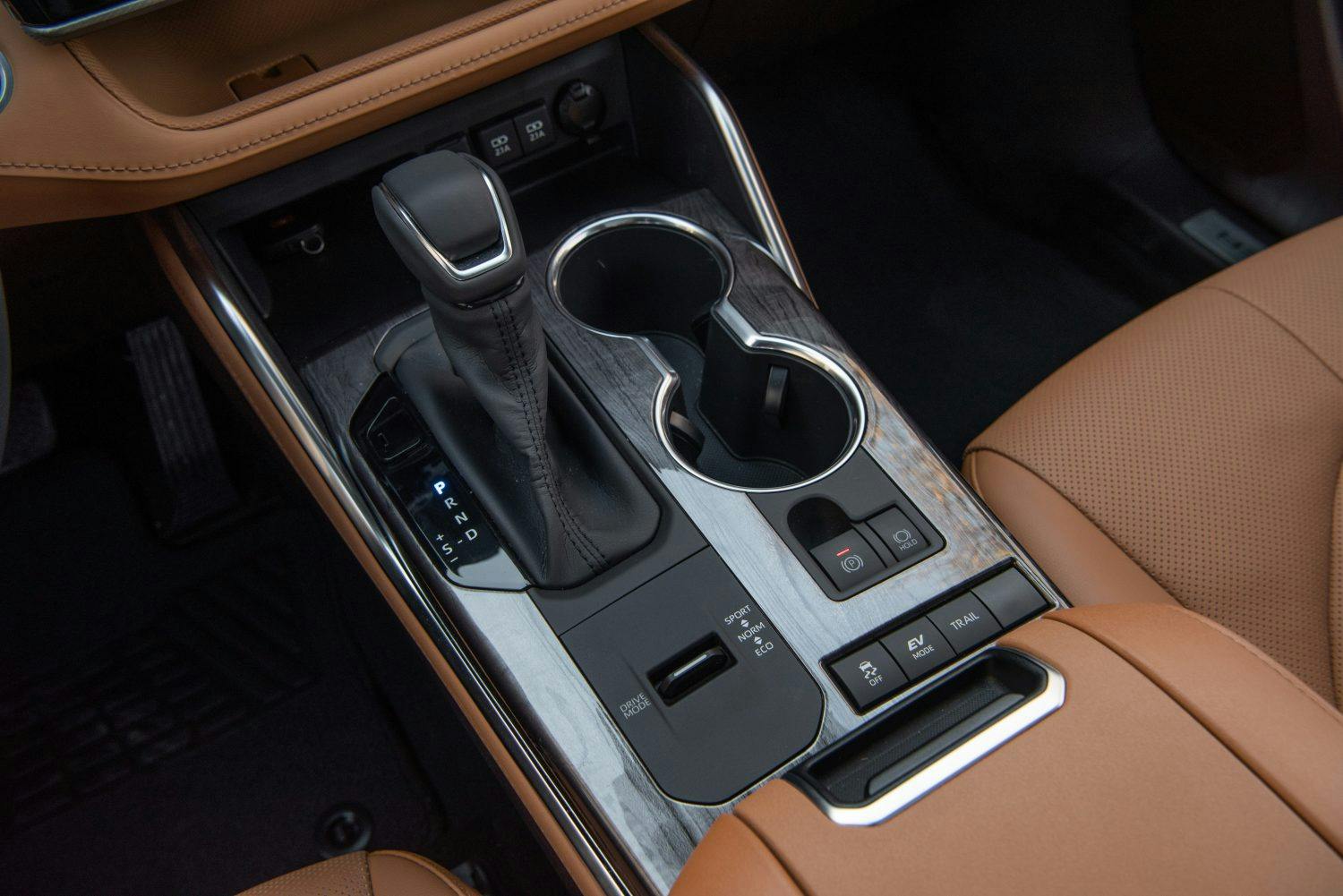

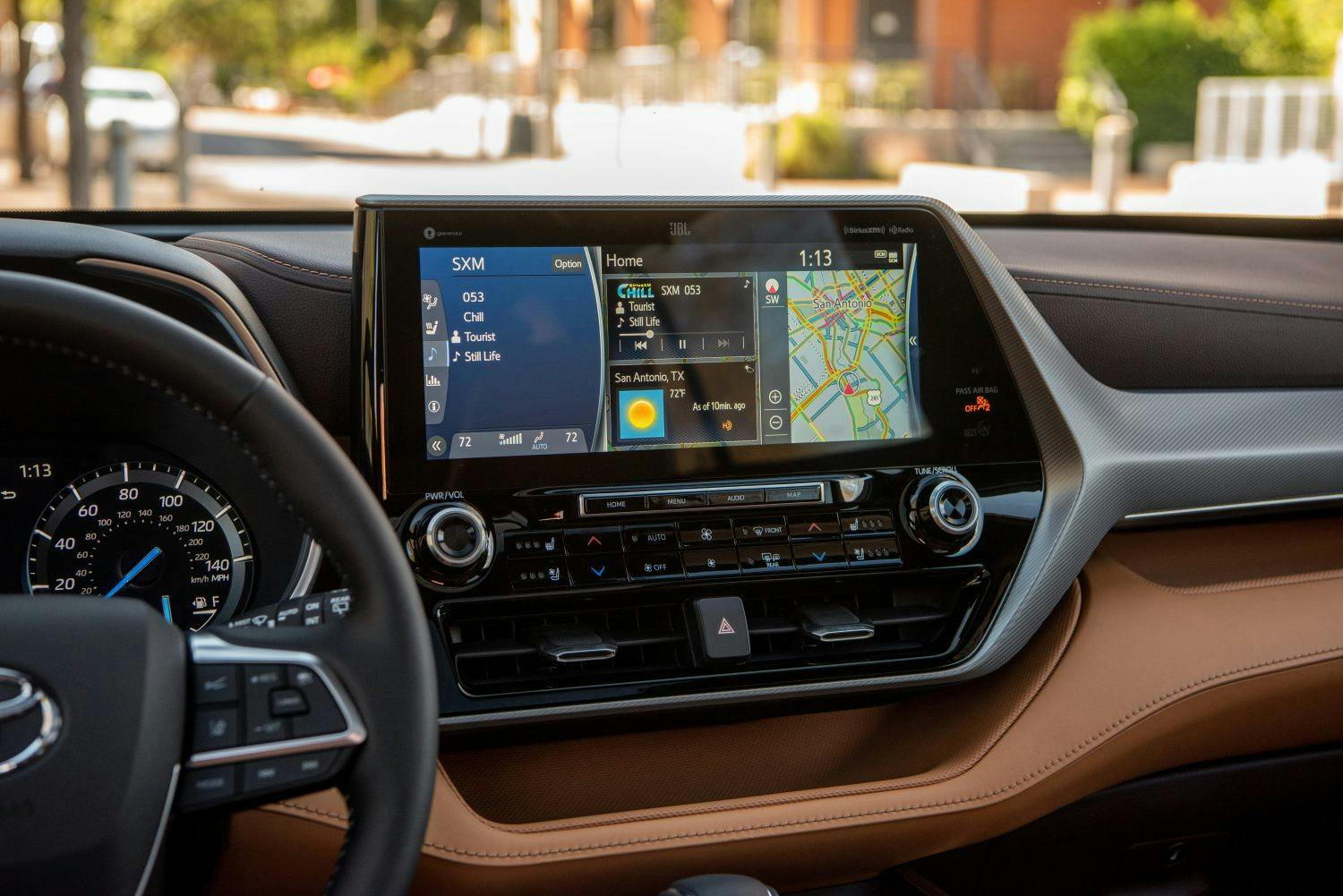
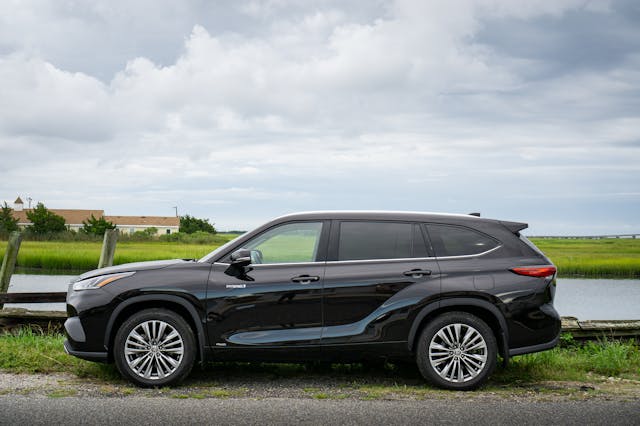
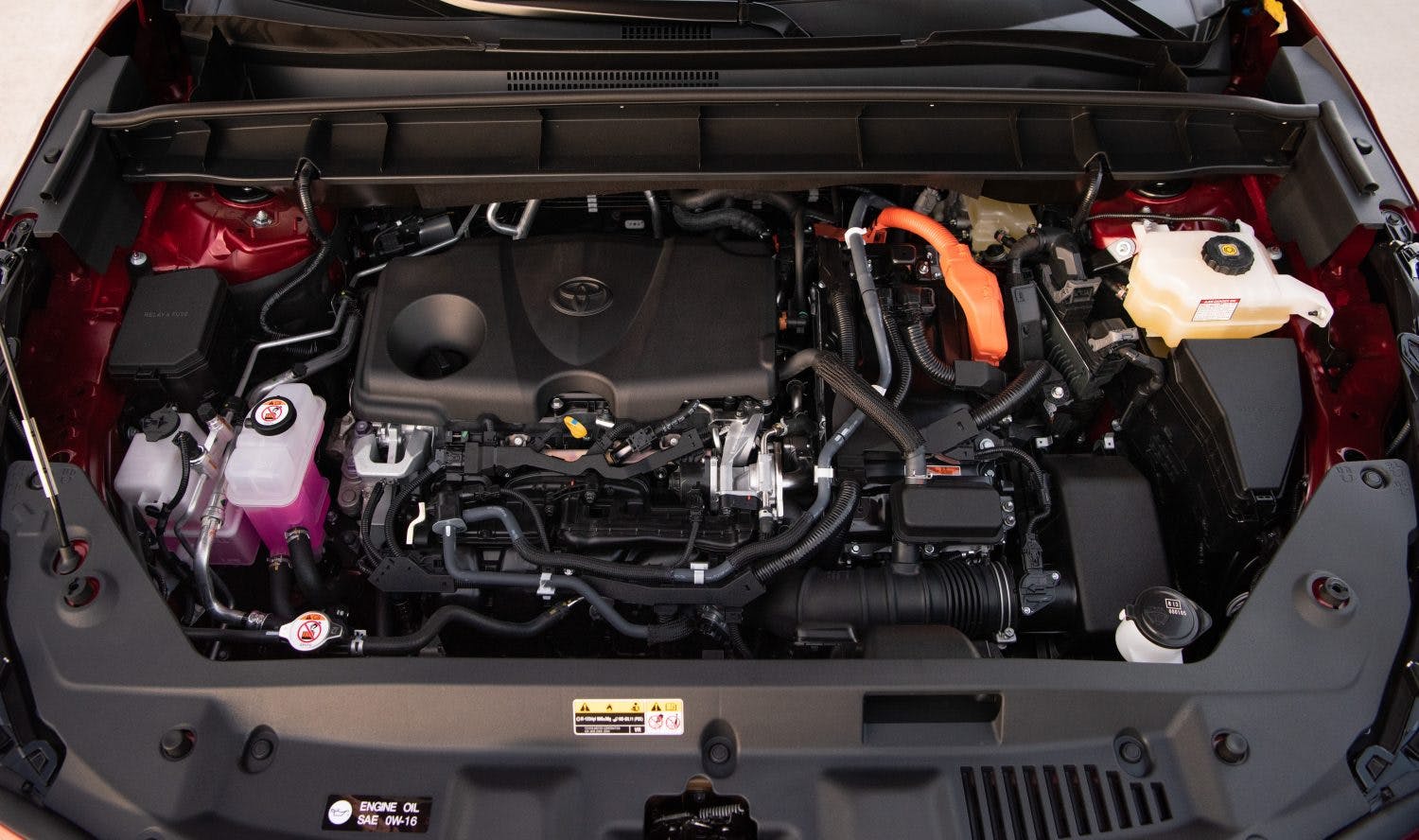
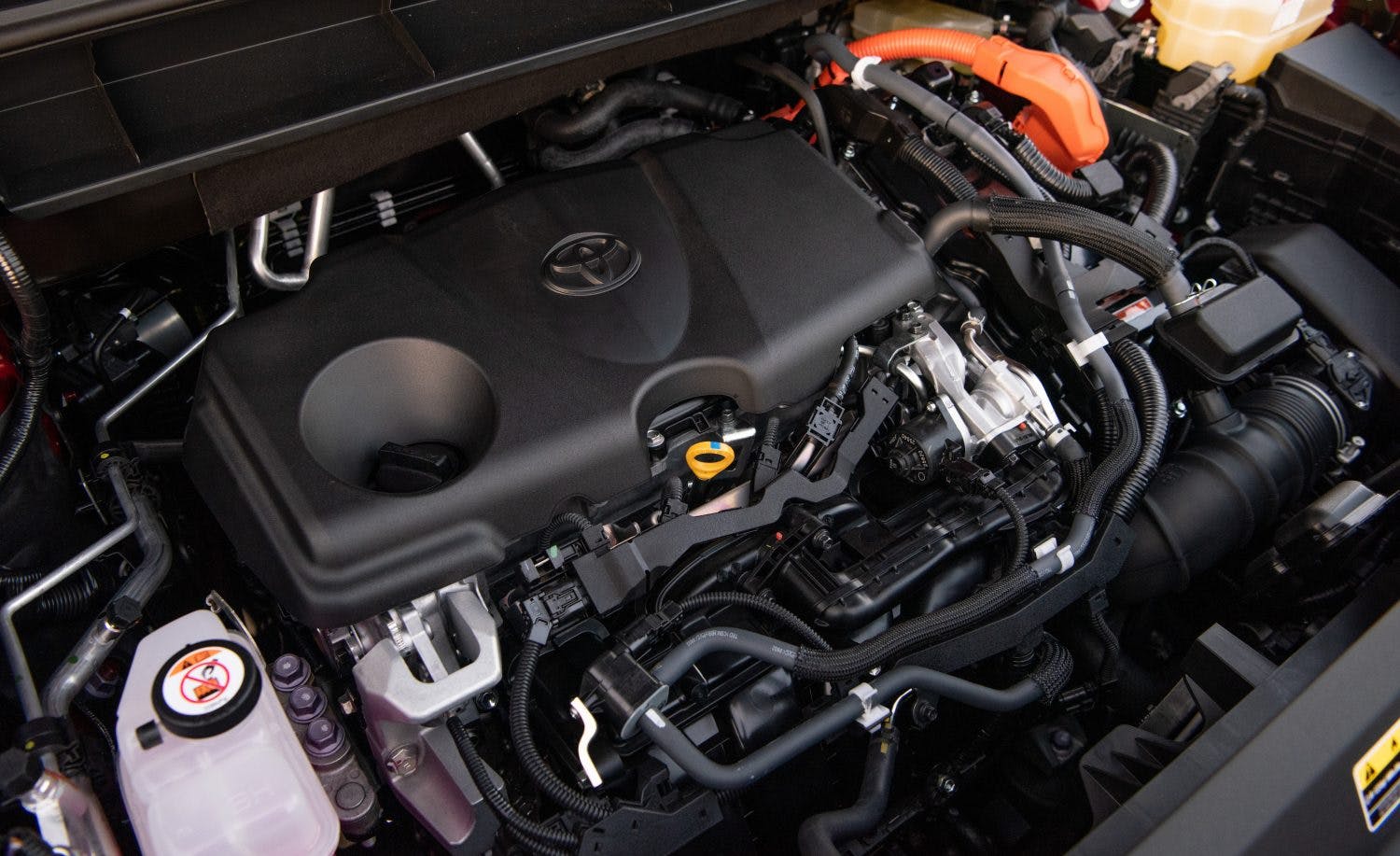
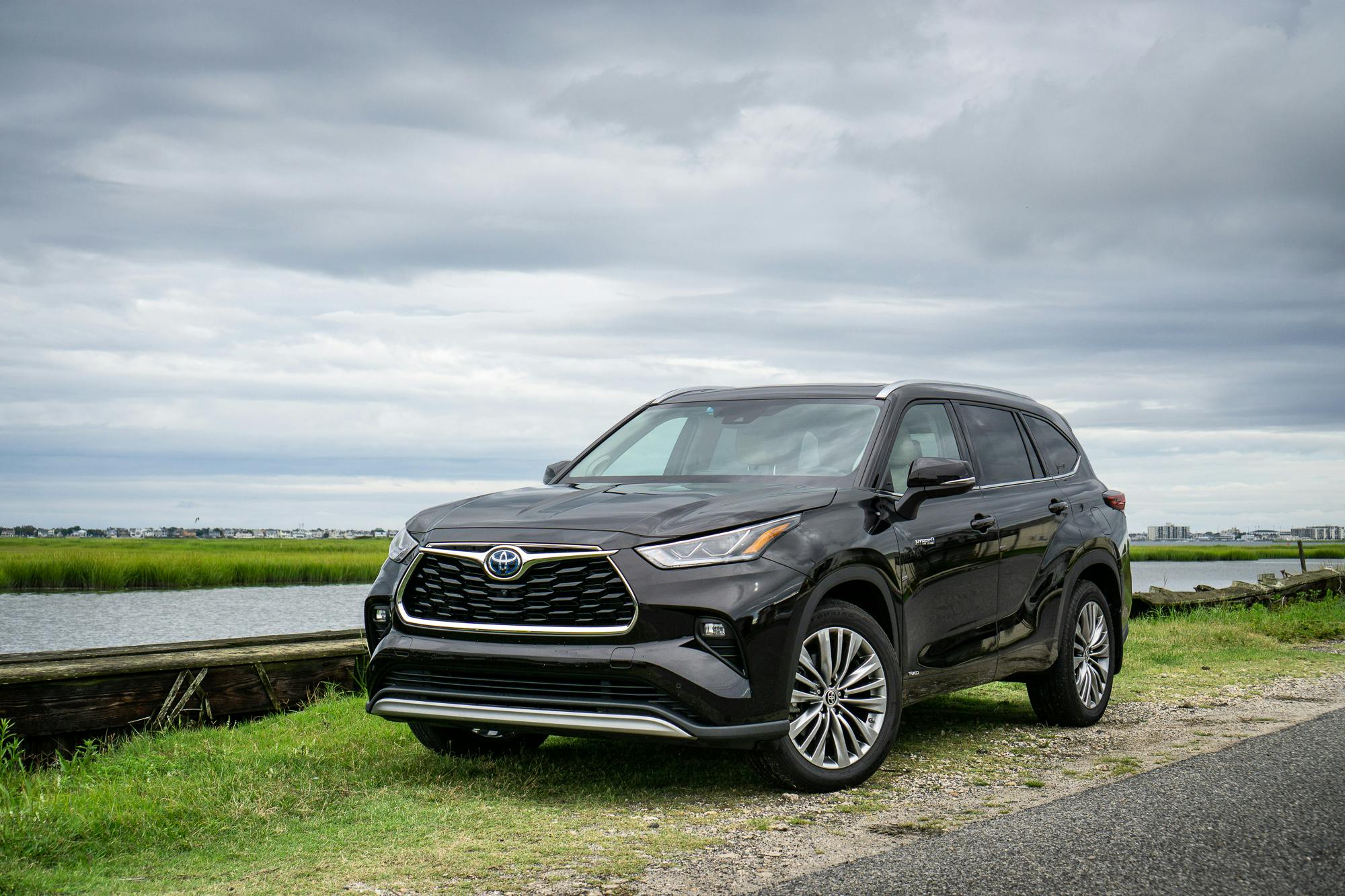


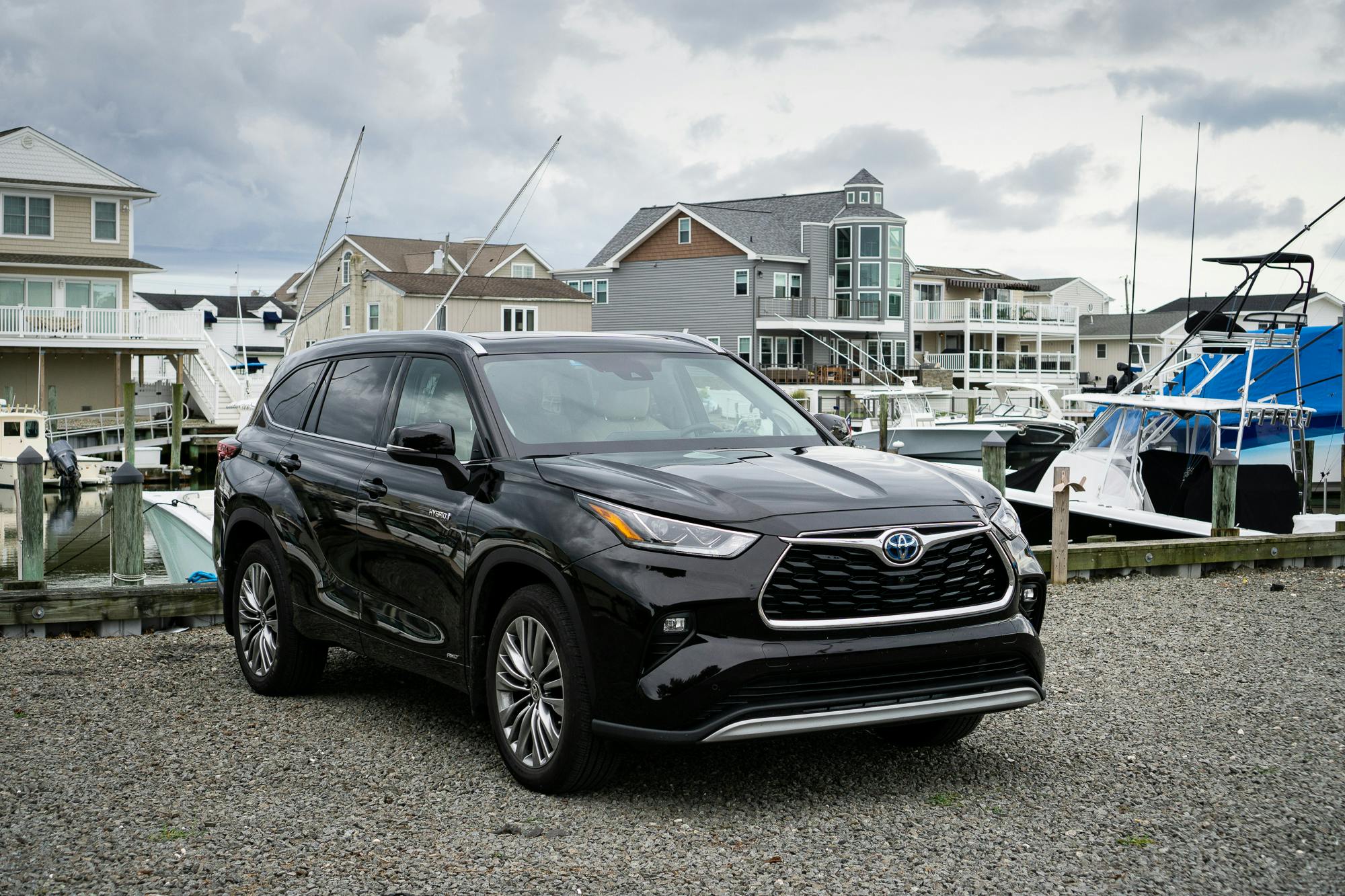
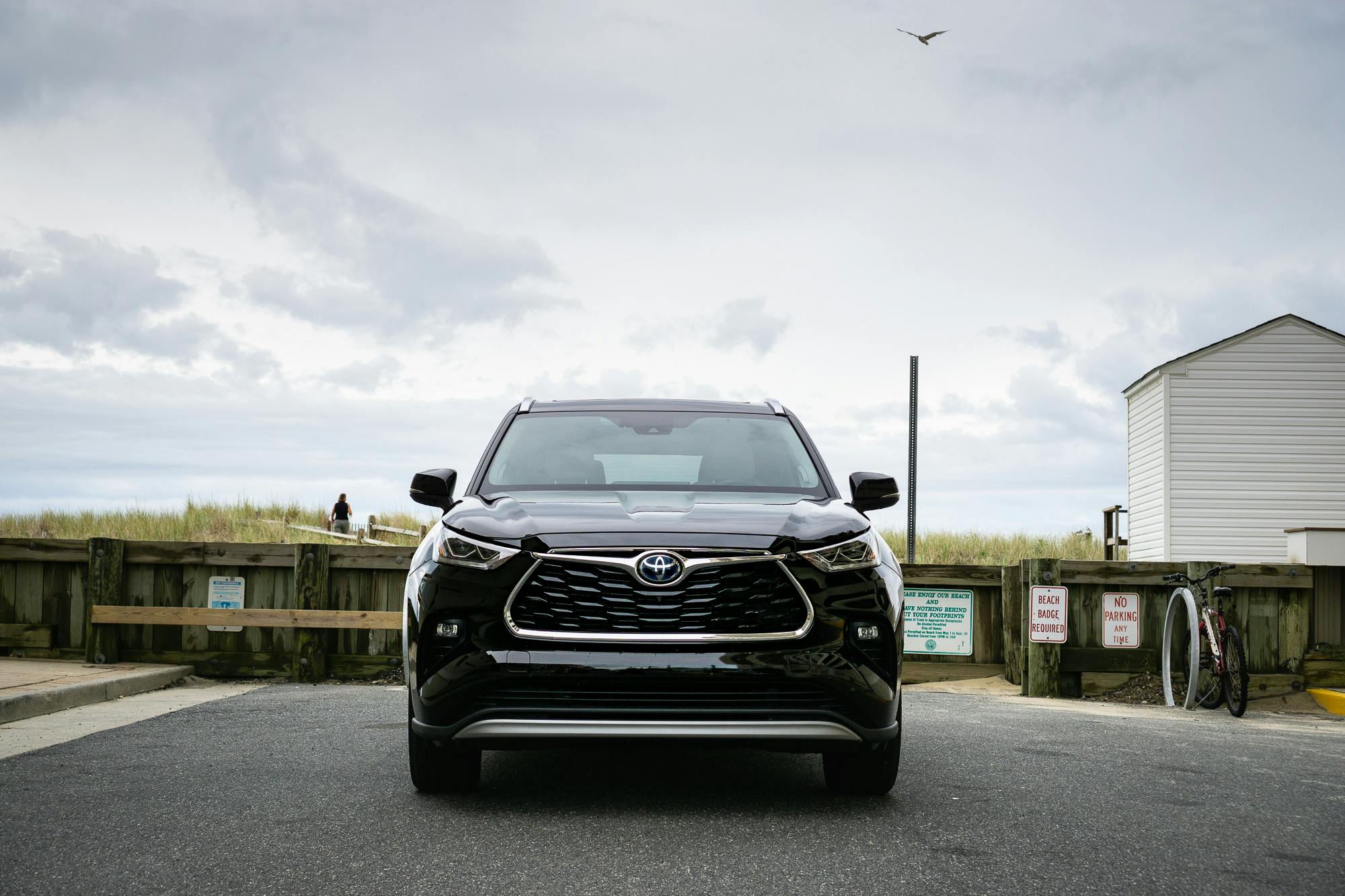


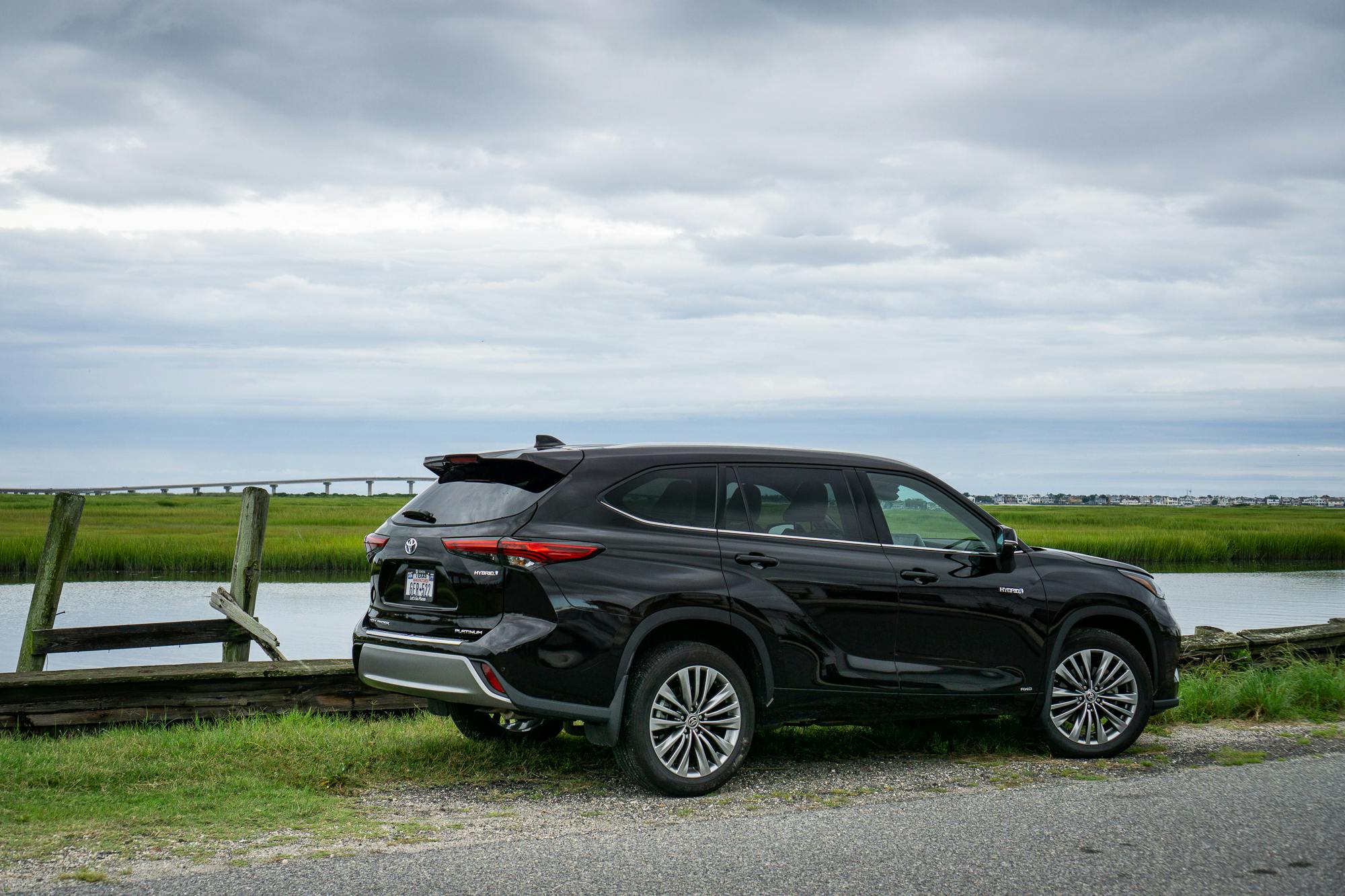
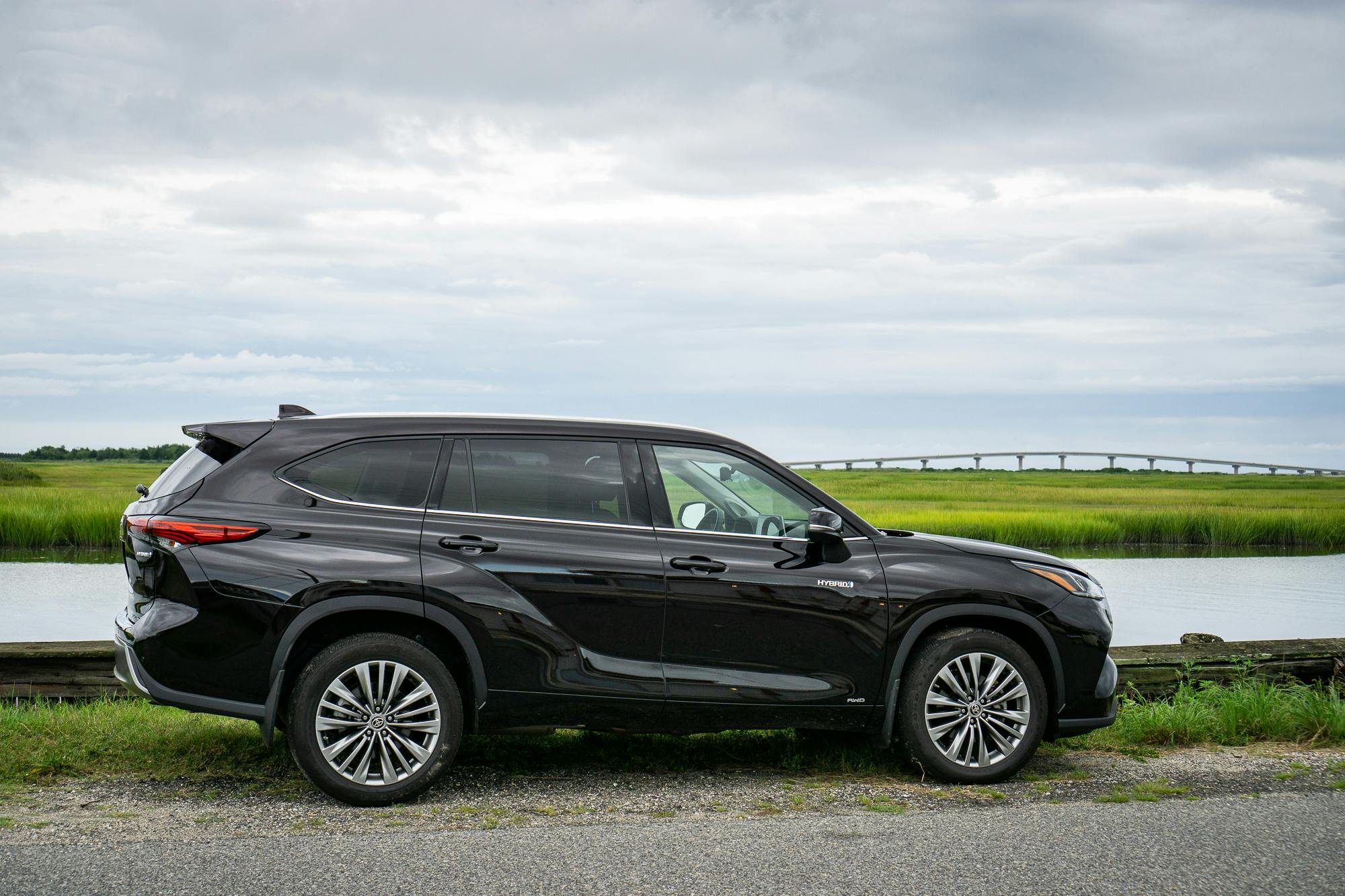
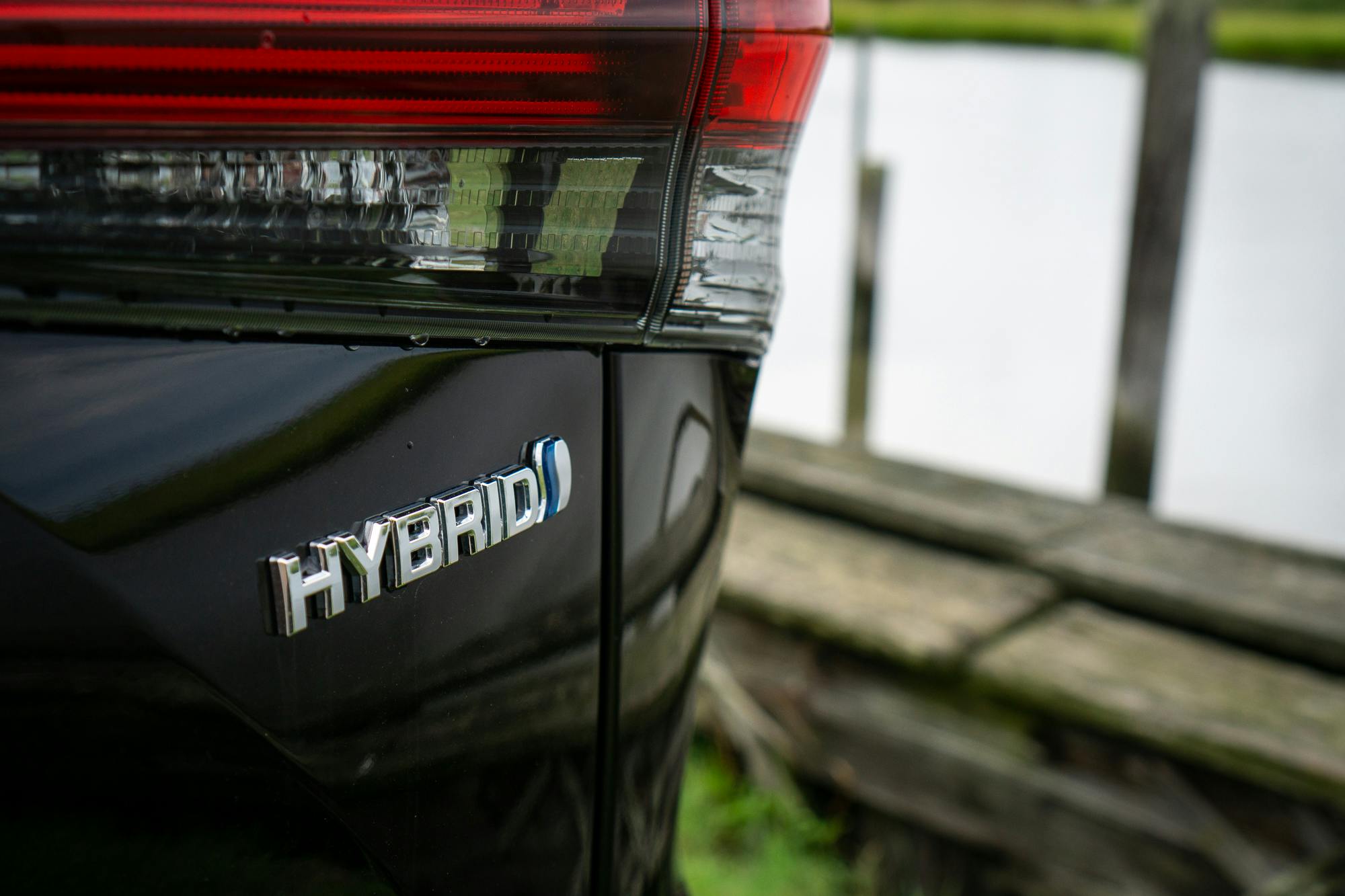
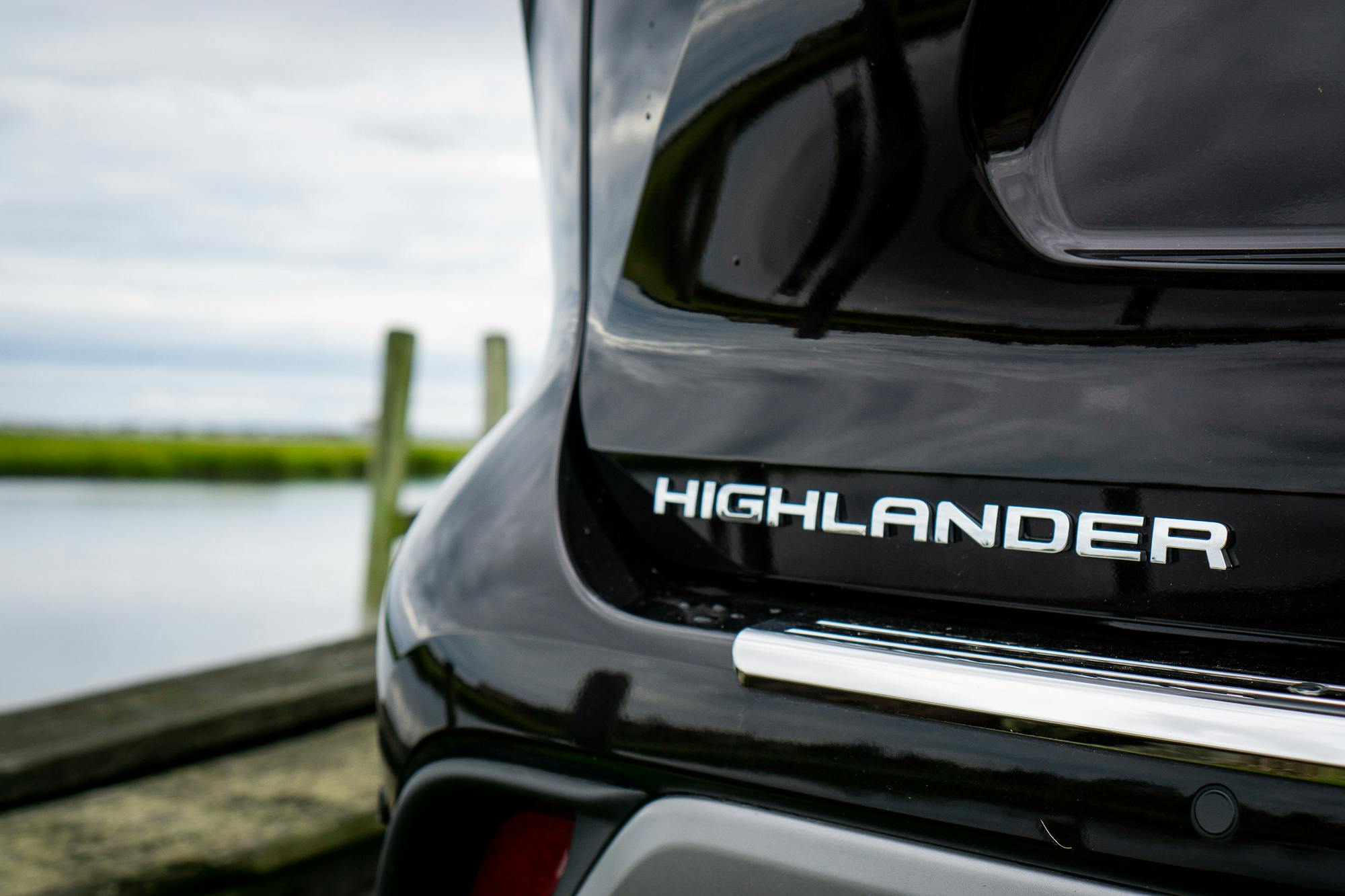



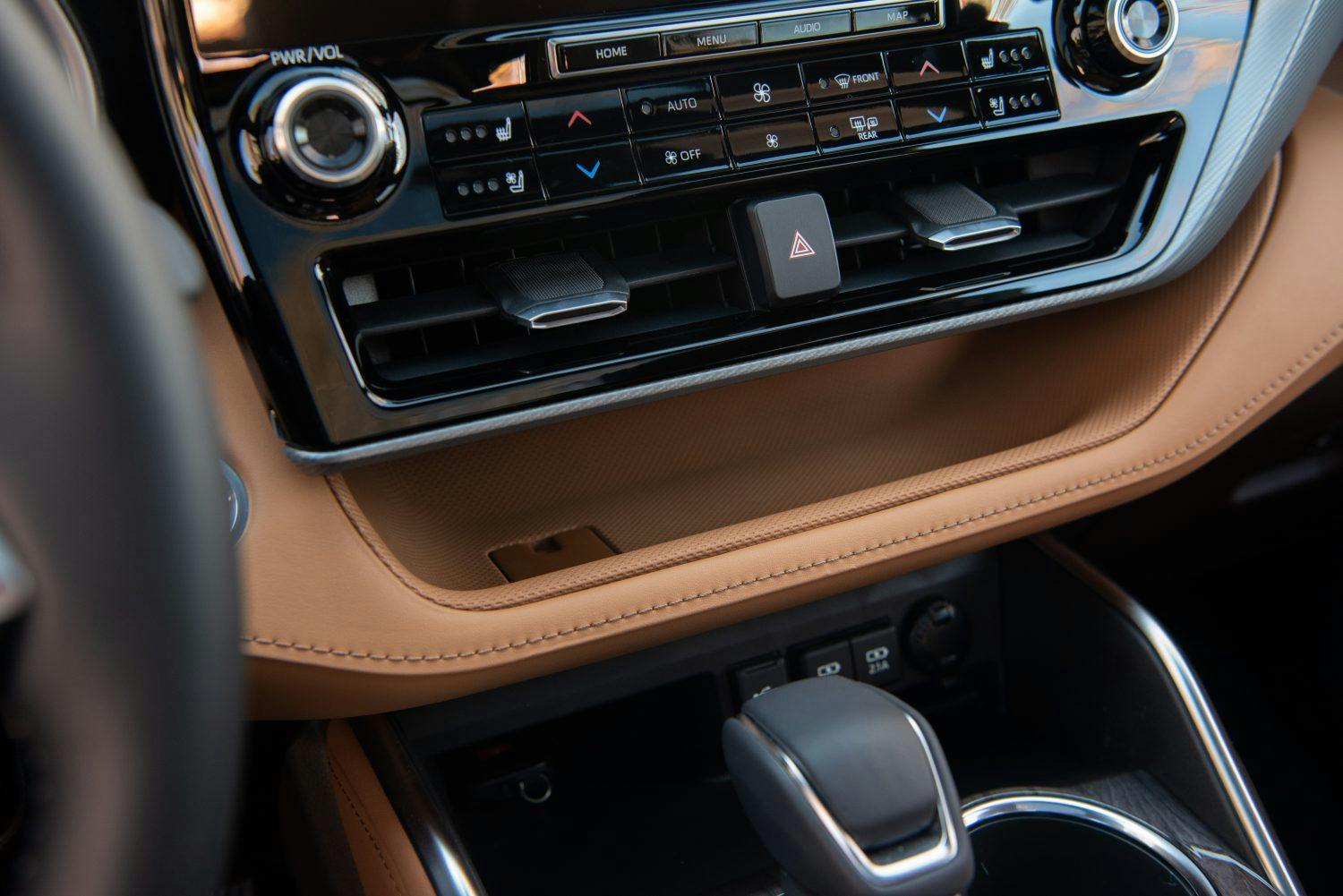
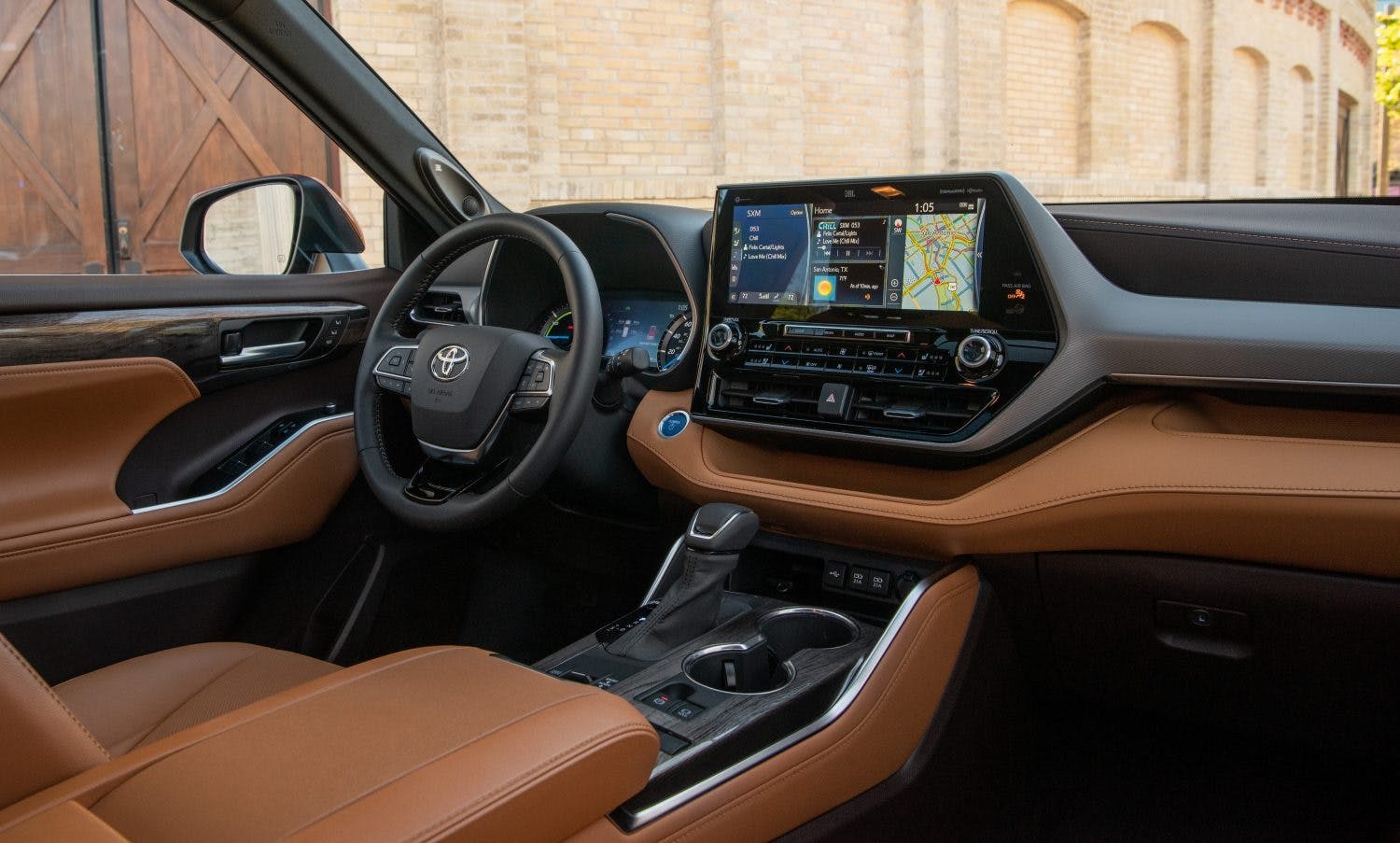

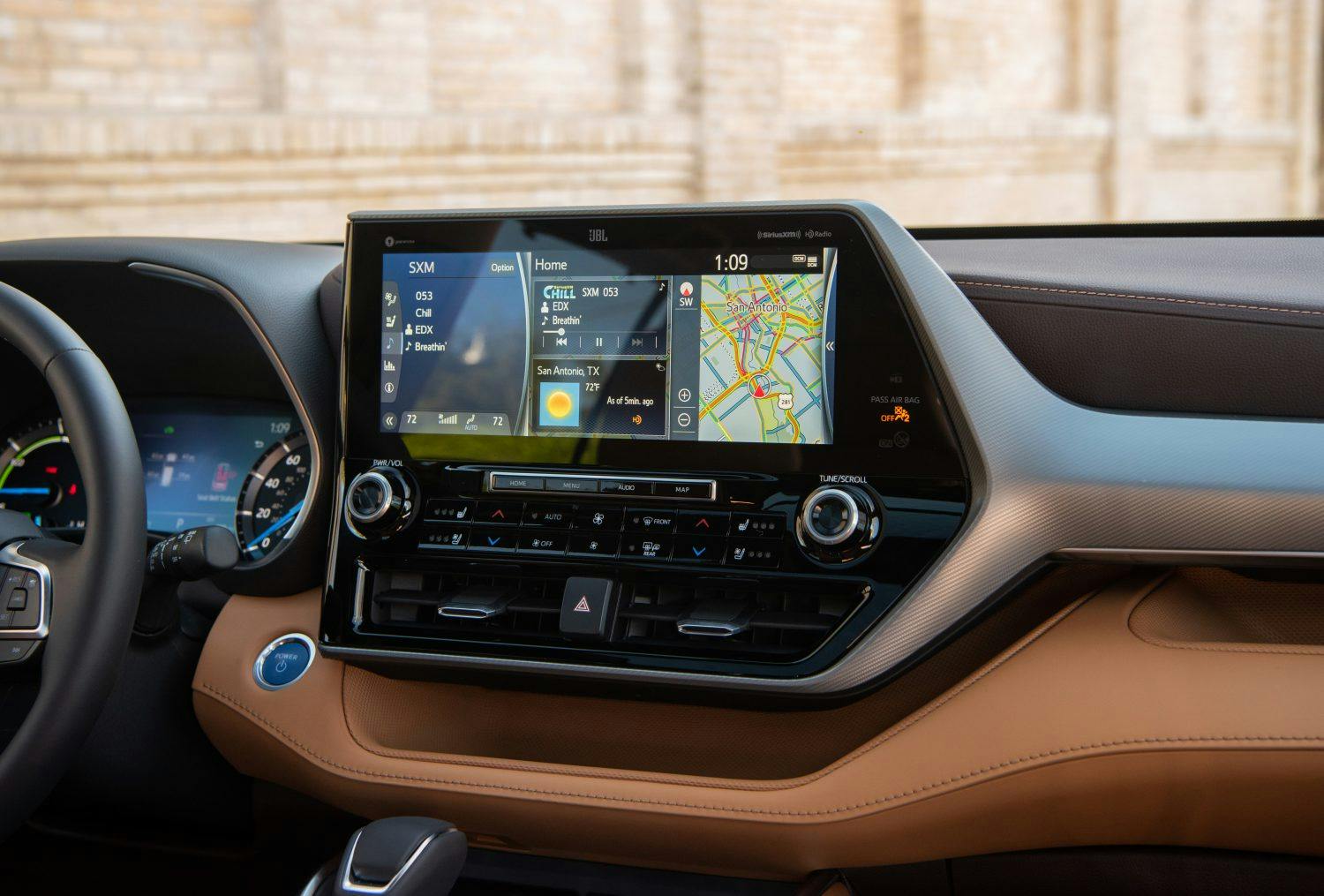

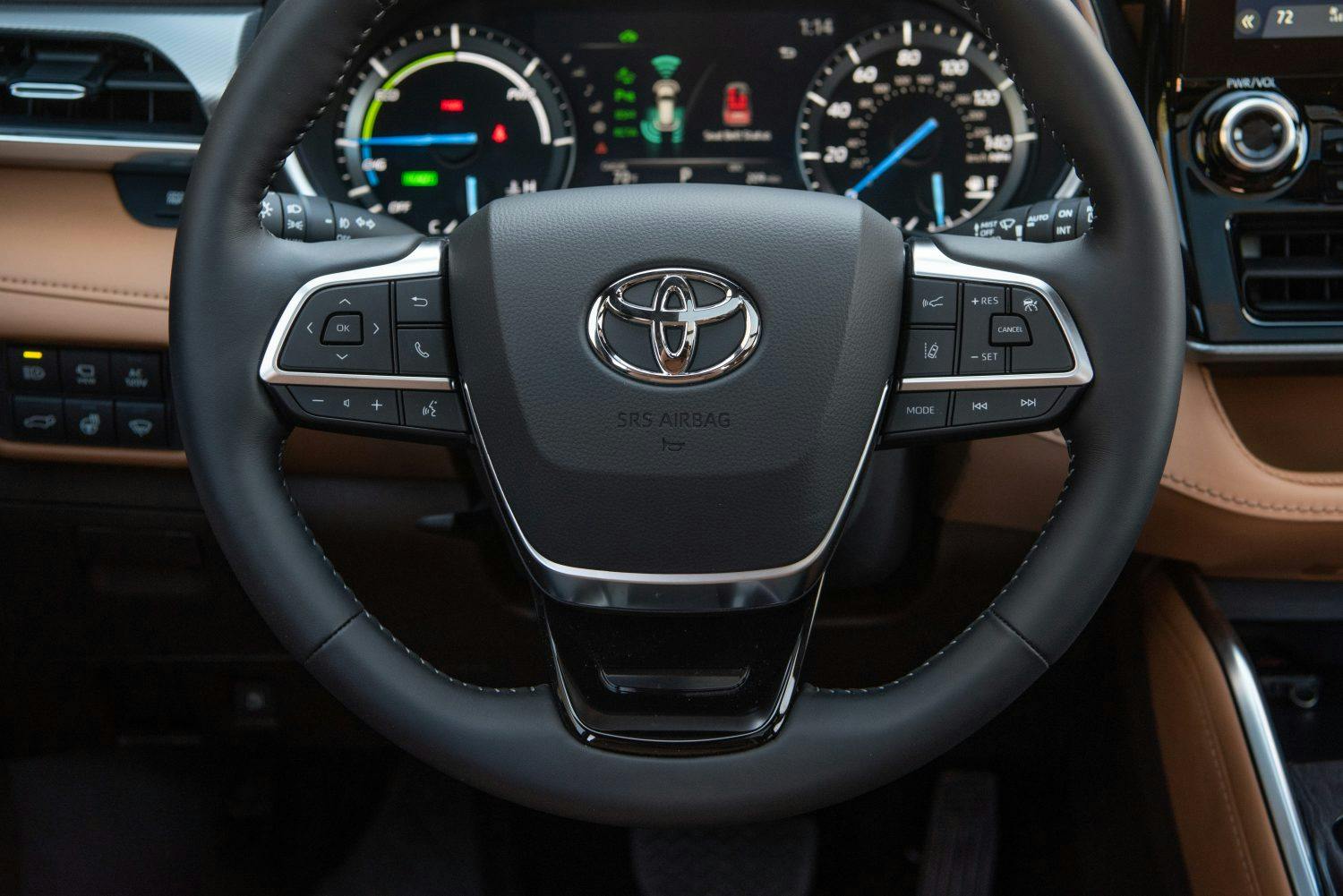
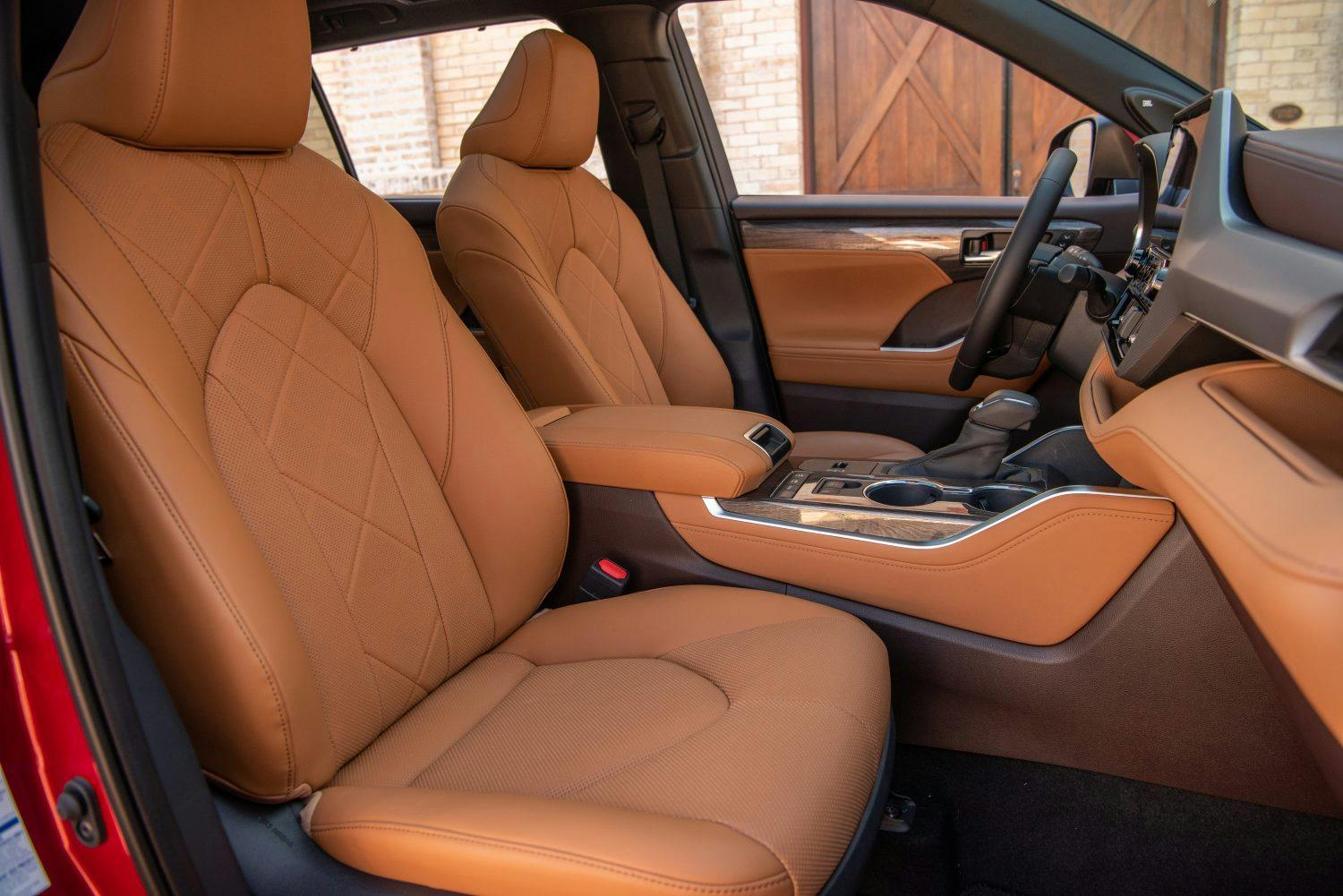

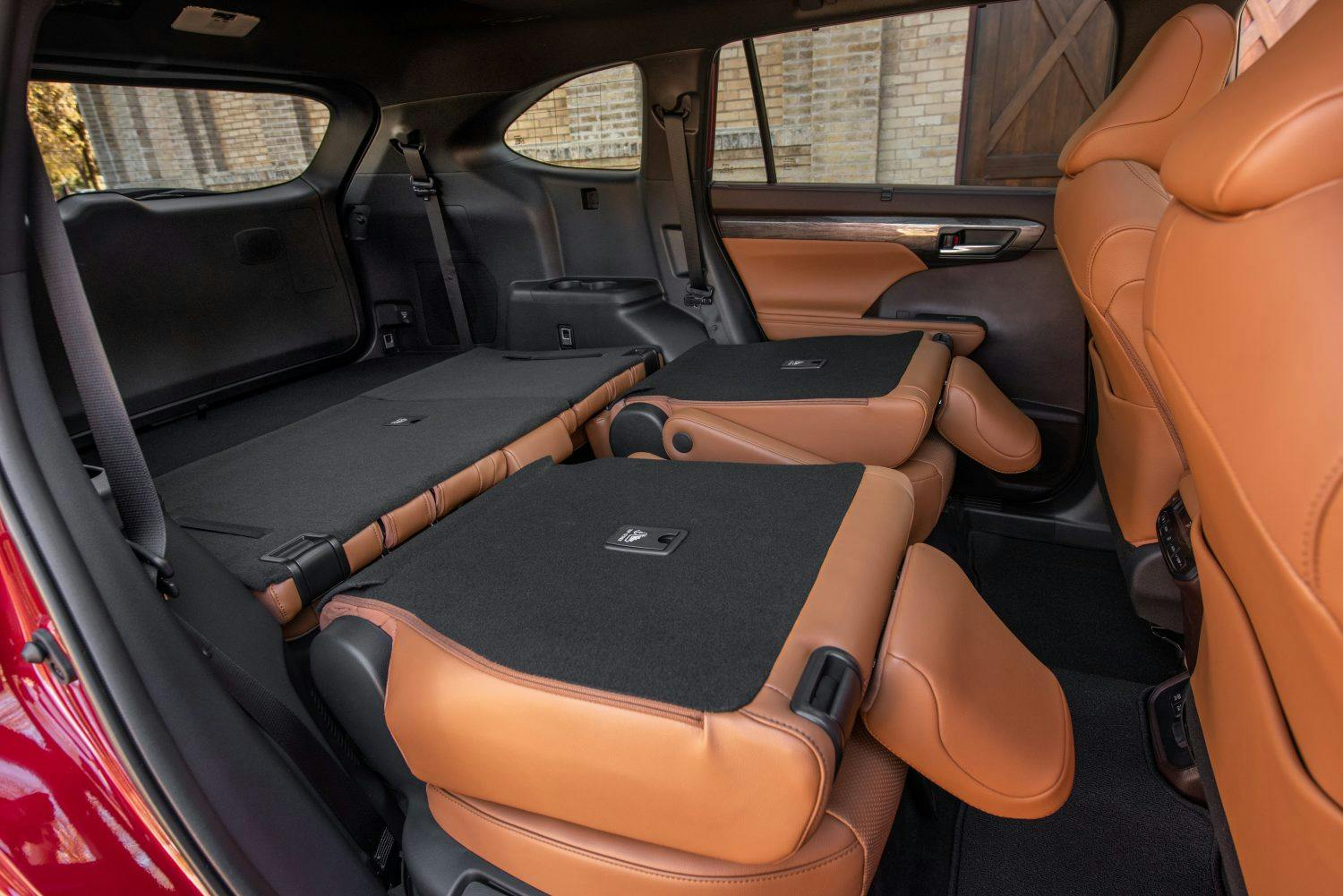



































I ma ready to pay $45.500,00 cash out of the door